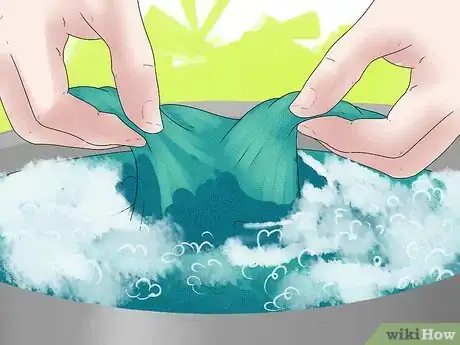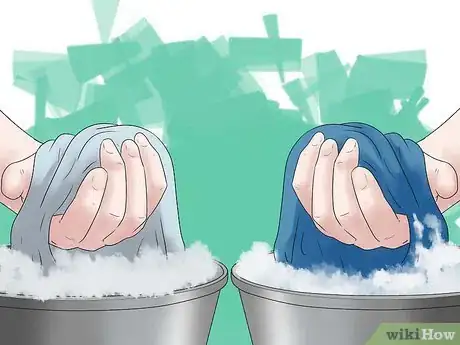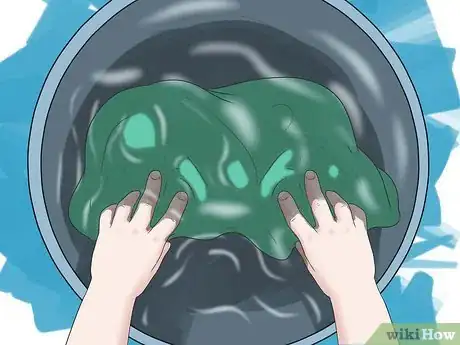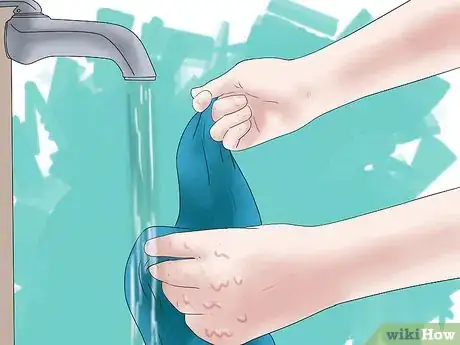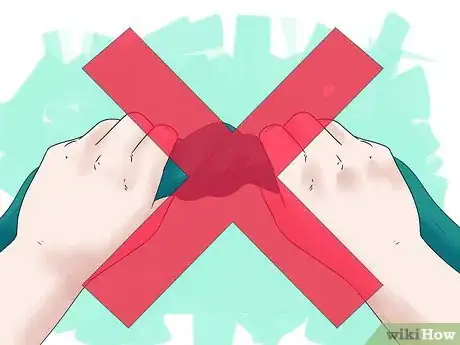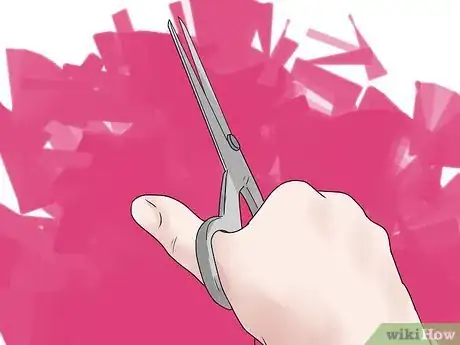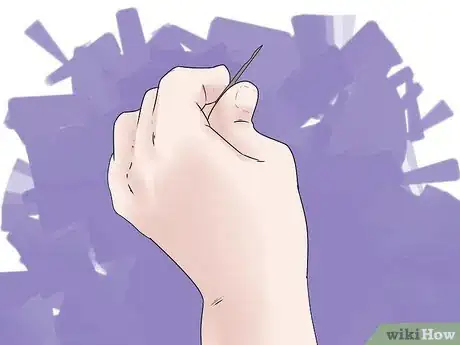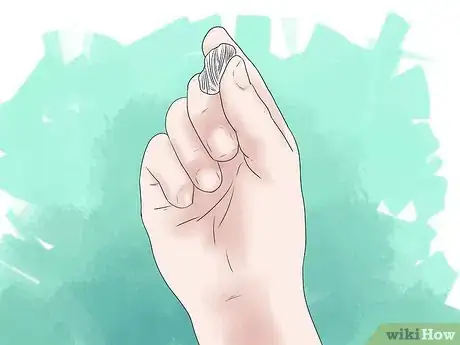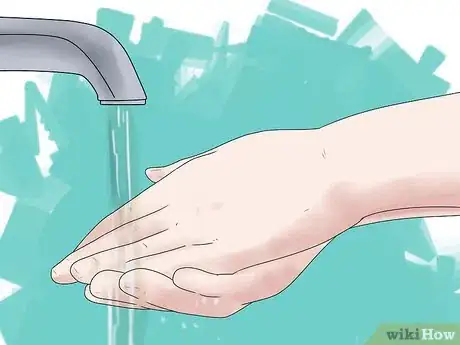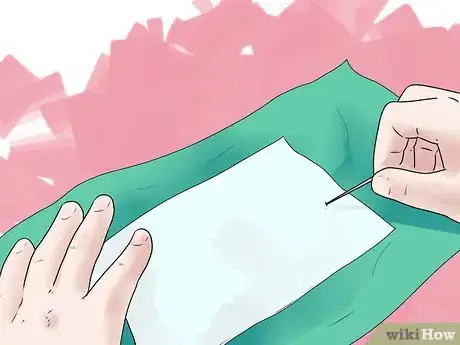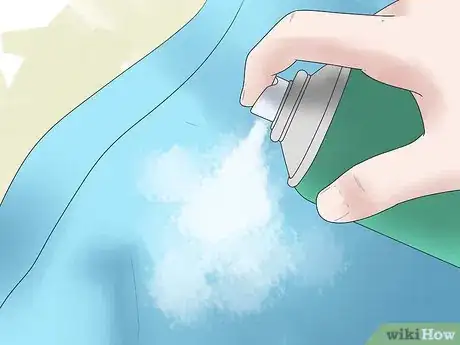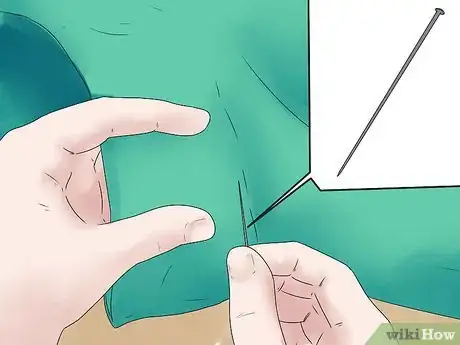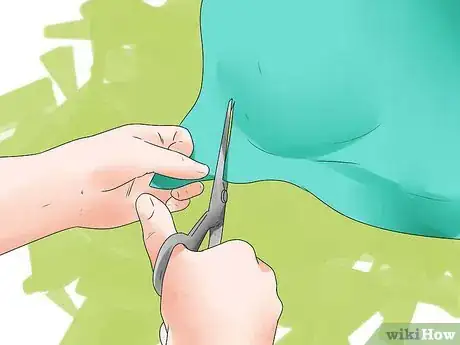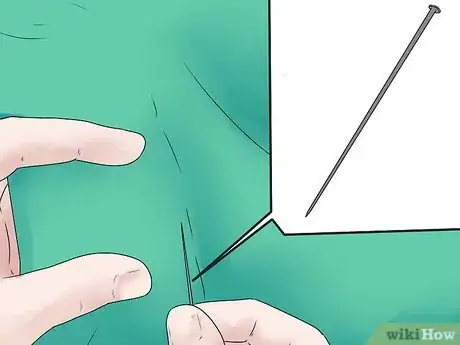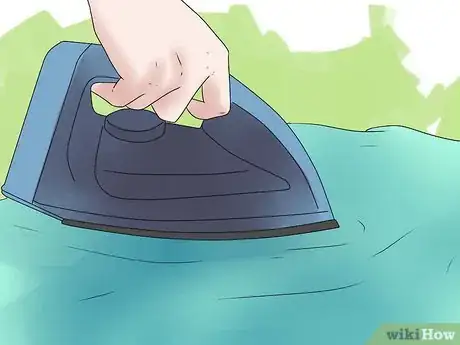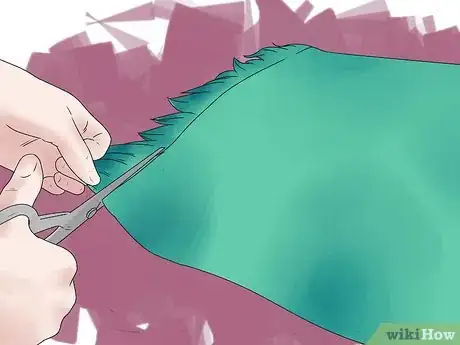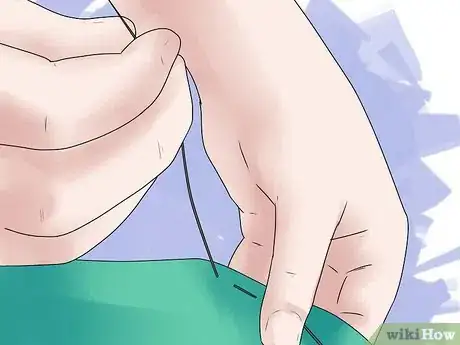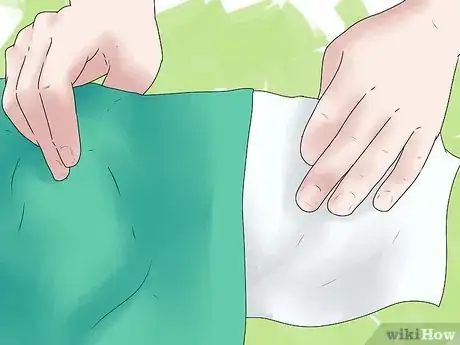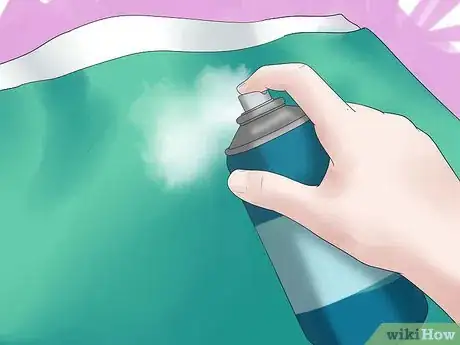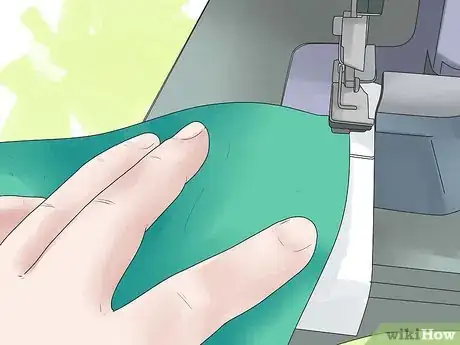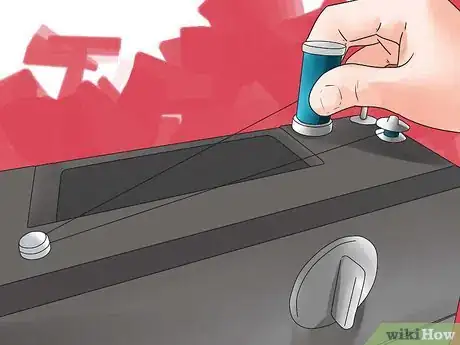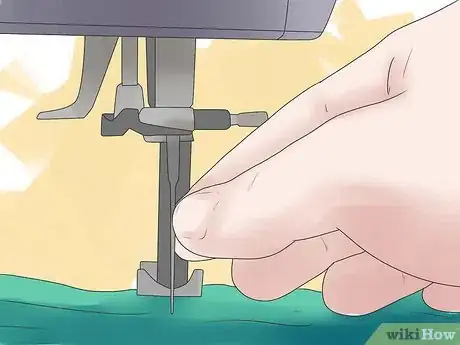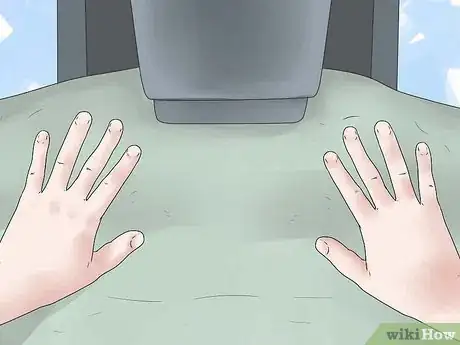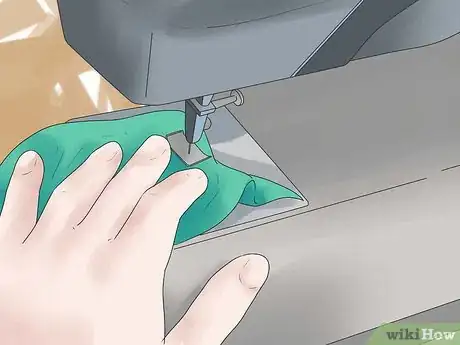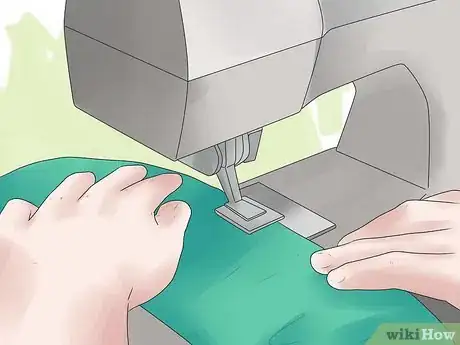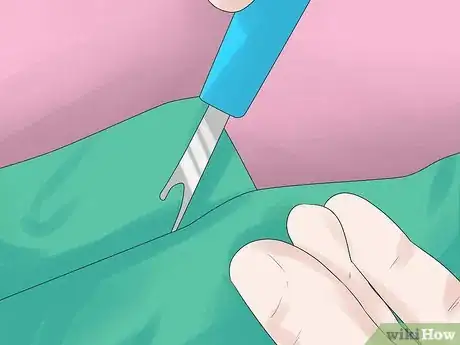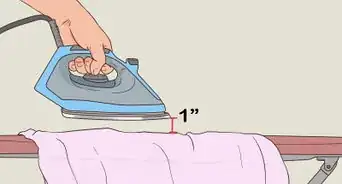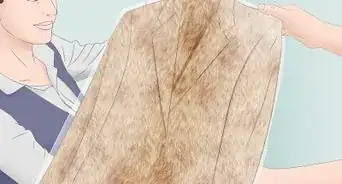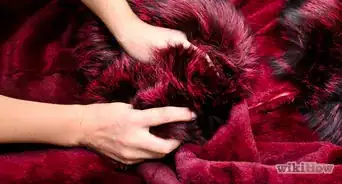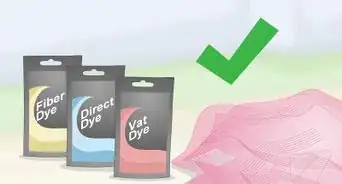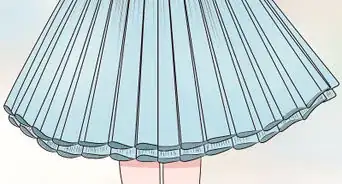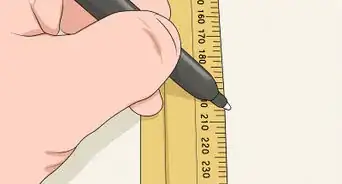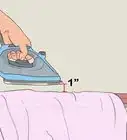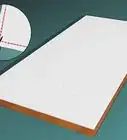This article was co-authored by Kpoene Kofi-Bruce. Kpoene Kofi-Bruce is a tailor, couture wedding gown designer, and the Creative Director of Mignonette Bridal and Ette the Wedding Tailor in Chicago, Illinois. With nearly two decades of experience as a wedding gown designer, small business owner, and vintage sewing enthusiast, Kpoene specializes in wedding gown design and the social history of wedding dresses. She received a BA in Creative Writing from Middlebury College and studied the business of fashion at the Fashion Institute of Technology. She is also a graduate of the Goldman Sachs 10KSB program and the Chicago Fashion Incubator and has written about wedding fashion for Jezebel, Catalyst, the Sun Times, and XO Jane.
There are 9 references cited in this article, which can be found at the bottom of the page.
wikiHow marks an article as reader-approved once it receives enough positive feedback. In this case, 85% of readers who voted found the article helpful, earning it our reader-approved status.
This article has been viewed 115,594 times.
Silk is a luxurious and sensuous fabric that has been coveted for centuries. Silk, which originates from the cocoons of silkworms, is also the strongest natural fiber.[1] The slippery and smooth texture of this fabric poses some difficulties that require special care when sewing. There are, however, simple techniques to make silk easier to handle and sew for every stage of a handmade sewing project.
Steps
Prewashing Silk
-
1Hand wash silk fabric. Silk fabric has a tendency to shrink, which can alter the size and look of your sewing project. By prewashing the fabric, you will minimize the amount of shrinkage that might occur when you wash the fabric after you’ve completed the project. Typically, silk will shrink about 5-10%, with some looser weavers shrinking up to 15%.[2]
- Use a mild detergent, such as Woolite or Ivory Snow, with warm water, washing the silk in a sink or bucket. Alternately, use a mild shampoo.
- You can also wash some silk fabrics in the washing machine. Use a delicate cycle and a mild detergent.[3]
- A few silks, such as dupioni, should be dry cleaned only.[4]
-
2Wash strong colors separately. If you have bright or deep colored silk, it’s best to wash these separately. Dyes used on silk have a tendency to run, and you don’t want to discolor your fabric. Take the time to do separate washes to ensure that colors don’t bleed from one piece to another.[5]
- Prewashing strong colors will also ensure that the colors don’t bleed after you have sewn your project.
Advertisement -
3Rinse the fabric in water and white vinegar. Vinegar will help get rid of the soap residue that remains on the fabric. In a bucket or sink, mix in ¼ cup of white vinegar per gallon of water. Swish around the silk fabric to rinse out the soap. Drain the water and leave the silk in the sink.
-
4Rinse the fabric again in water. Put the fabric through a second rinse, this time without vinegar. The clean water will rinse out any remaining vinegar and will remove the vinegar odor.
-
5Don’t wring out the silk fabric. After you finish hand washing the fabric, do not twist or wring it out to remove excess water. Rather, lay the fabric out on a towel and then lay another towel on top.
- You can remove some extra moisture by ironing over the top towel using a medium temperature.[6]
-
6Dry the fabric. There are several methods of drying silk fabric, depending on your preference. Try partially drying the fabric in the dryer. Remove the fabric when it is still damp and hang up to finish drying.
- Alternately, you can dry the silk between two towels, or let it hang dry right after you have washed it.
Gathering Your Supplies
-
1Select sharp scissors. Because silk is slippery, use very sharp scissors so that the cuts you make to the fabric will be smooth and clean.[7]
- It may be useful to have regular sewing shears as well as pinking shears. Pinking shears are scissors that cut little triangles along the edge of fabric. This can help with fraying, which silk has a tendency to do.
-
2Choose a small sewing machine needle. A fine, sharp needle will leave smaller holes in the silk fabric. Since silk is prone to showing holes easily, choose a small-sized needle to use when sewing your project.
- A 60/8 Microtex or Universal needle is an ideal size.[8]
- Have a few spare needles on hand while you work on your project. It is a good idea to replace needles every so often so that you are constantly using a very sharp needle. Silk fibers are quite tough and can dull the needle easily.
- If you are hand-sewing, choose a very sharp, fine needle.
-
3Choose a good quality cotton or polyester thread. Choose a thread to match your fabric. Cotton-wrapped or 100% polyester thread are good choices. While some people might like to use silk thread with silk fabric, silk thread is not very strong and can fray easily.[9]
-
4Choose a flat-bottomed foot for your sewing machine. The foot on a sewing machine will press down the fabric while the needle moves up and down. A flat-bottomed foot is recommended, as it will not snag on the silk as the fabric moves through the machine.
- Alternately, choose a walking foot, which keeps the silk from sliding around.
-
5Clean and dust your sewing machine. Working with a clean, dust-free machine is a good rule of thumb whenever you sew, but it is particularly important when sewing a delicate fabric such as silk. Wipe down the machine to remove any residue on the machine. To remove dust, you can use a pressurized air canister to blow air into the crevices and cracks of your machine.
Cutting Silk Fabric
-
1Wash your hands before handling silk. When you are ready to start handling your fabric, wash your hands with soap and water. Dry them thoroughly. This will remove any residue or oils from your hands that could spot the fabric.
- This is especially important if you are hand-sewing the fabric.
-
2Layer muslin or tissue paper underneath the silk layer. Having tissue paper, muslin, or even butcher paper will help keep the silk fabric from slipping when you cut it with your scissors.
- Tissue paper is especially useful because you can continue using it to stabilize your fabric, including when you pin and sew the fabric.
-
3Spray on fabric stabilizer. You can also use a spray-on fabric stabilizer, which will stiffen the fabric somewhat and make it easier to manage while you cut it. This is available at fabric stores and online.
-
4Use silk pins and pattern weights. Silk pins are extra fine pins that leave very tiny holes in silk fabric. These are useful for pinning patterns to fabric without noticeably marring the surface of the fabric. Pattern weights are used to hold fabric stationary on the cutting surface so that it doesn’t shift around when you are cutting.[10] You can also use heavy objects such as canned food to hold down the fabric.
-
5Cut each pattern piece one at a time. With other types of fabric, you can usually cut same-shaped pattern pieces together, doubling up the fabric. With silk, however, it’s best to cut each pattern piece individually. Silk slips around too much, and cutting through two layers of fabric might cause errors in cutting out the pattern.
- For pattern pieces on a fold, redraw the piece as it would be folded out. This way, you won’t have to cut two layers of fabric at once.
Preparing Fabric for Sewing
-
1Use silk pins. Silk pins are extra fine pins that leave very tiny holes in silk fabric. These are useful for pinning fabric pieces together without noticeably marring the surface of the fabric.
- Alternately, use wonder clips or binder clips to clip fabric together.
-
2Position pins in the seam allowances. The seam allowances are the areas of the fabric along the edges that will not show in the final sewing project. Since silk will show holes very easily, pin fabric together in the seam allowances to avoid poking holes in noticeable places. Typical sewing allowances are ½ inch or 5/8 inch in width.
-
3Press seams with low iron heat and a press cloth. Iron the silk fabric to make seams more visible when you sew them. Ironing seams will also keep them in place while you sew. Use a low setting on your iron, and put a press cloth over your fabric to avoid direct contact with your fabric.
- Many irons have a silk setting, which is appropriate to use for this purpose.
-
4Cut away fraying edges. Silk has a tendency to fray easily, and after you prewash the fabric, there may be more frays than a brand-new piece of fabric. Cut edges to remove frays and to make the edges even. Trim away any loose threads.
Sewing the Silk Fabric
-
1Hand-baste fabric pieces together. Hand-basting is a technique of using long, loose stitches to hold fabric together and make sewing easier. Since silk is so slippery, it can be helpful to hand-baste the pieces with a stitch that looks like a dotted line.
- Read “How to Baste Fabric” for more information.
-
2Place a piece of tissue paper underneath your silk. If your silk fabric is slipping too much while sewing, try layering a piece of tissue paper underneath your sewing area. The needle will sew through both layers, sewing them together.
- When you’re done sewing the piece, you can just tear away the tissue paper.
-
3Spray on fabric stabilizer. You can also use a spray-on fabric stabilizer, which will stiffen the fabric somewhat and make it easier to manage while you cut it. This is available at fabric stores and online.
-
4Test your sewing on a scrap piece. Check how your sewing machine settings will respond to the silk by test sewing on a scrap piece of silk. Make adjustments to the tension and gauge of your thread before you move on to sewing your project.[11]
-
5Pull back the top thread and bobbin thread. As you set the fabric in place at your sewing machine, pull the top thread and bobbin thread back away from you. This will ensure that it won’t get accidentally wrapped up in the machine foot, which could cause holes or pulls in the fabric as you sew it.
-
6Manually bring the needle down into the fabric. Rotate the hand wheel to bring the needle down into the fabric. This will ensure that the sewing machine will start very slowly and the fabric won’t pucker or catch on the foot.[14]
-
7Hold the fabric straight. Gently flatten the fabric so that it feeds straight into the machine. Don’t pull it taut, however, as this can cause puckers in the final sewing project.
-
8Sew a few stitches and then backstitch. Start out your stitching with a few stitches and then secure them by backstitching along them. This will ensure that the stitches won’t come out. Do so very carefully, so that you don’t accidentally allow the silk fabric to creep or bunch up at the beginning.
-
9Sew at a steady, slow pace. Silk has a tendency to bunch and gather, so go slowly when you’re sewing this fabric. Try a steady pace to ensure that the stitches are even and consistent.[15]
-
10Check on your progress frequently. Slow down or pause to make sure the fabric is feeding properly through the machine. Look at your seams to see if they are sewing flat and without any snags.
-
11Take care if ripping out seams. Ripping out seams from silk fabric is risky, as this may leave holes in the fabric that you will be able to see even after the project is finished. Decide if seam ripping is necessary. If yes, then proceed very carefully and slowly.
- To minimize holes, rub the holes on the underside of the fabric with your fingernail. Dampen the fabric by spraying it lightly with water, and then iron it on a low to medium setting.[16]
-
12Finish the seams. Silk will fray very easily, and that can compromise the quality of your sewing project if the edges fray all the way to where the stitches are. Finish the seams with a serged finish or a French seam.
Expert Q&A
-
QuestionWhat is the best way to cut silk?
 Kpoene Kofi-BruceKpoene Kofi-Bruce is a tailor, couture wedding gown designer, and the Creative Director of Mignonette Bridal and Ette the Wedding Tailor in Chicago, Illinois. With nearly two decades of experience as a wedding gown designer, small business owner, and vintage sewing enthusiast, Kpoene specializes in wedding gown design and the social history of wedding dresses. She received a BA in Creative Writing from Middlebury College and studied the business of fashion at the Fashion Institute of Technology. She is also a graduate of the Goldman Sachs 10KSB program and the Chicago Fashion Incubator and has written about wedding fashion for Jezebel, Catalyst, the Sun Times, and XO Jane.
Kpoene Kofi-BruceKpoene Kofi-Bruce is a tailor, couture wedding gown designer, and the Creative Director of Mignonette Bridal and Ette the Wedding Tailor in Chicago, Illinois. With nearly two decades of experience as a wedding gown designer, small business owner, and vintage sewing enthusiast, Kpoene specializes in wedding gown design and the social history of wedding dresses. She received a BA in Creative Writing from Middlebury College and studied the business of fashion at the Fashion Institute of Technology. She is also a graduate of the Goldman Sachs 10KSB program and the Chicago Fashion Incubator and has written about wedding fashion for Jezebel, Catalyst, the Sun Times, and XO Jane.
Couture Bridal Designer Designate a pair of scissors for cutting delicate fabrics like silk satin, chiffon, charmeuse, and silk weaves, and don't use those scissors to cut anything else.
Designate a pair of scissors for cutting delicate fabrics like silk satin, chiffon, charmeuse, and silk weaves, and don't use those scissors to cut anything else. -
QuestionWhy should you buy extra material for a sewing project?
 Kpoene Kofi-BruceKpoene Kofi-Bruce is a tailor, couture wedding gown designer, and the Creative Director of Mignonette Bridal and Ette the Wedding Tailor in Chicago, Illinois. With nearly two decades of experience as a wedding gown designer, small business owner, and vintage sewing enthusiast, Kpoene specializes in wedding gown design and the social history of wedding dresses. She received a BA in Creative Writing from Middlebury College and studied the business of fashion at the Fashion Institute of Technology. She is also a graduate of the Goldman Sachs 10KSB program and the Chicago Fashion Incubator and has written about wedding fashion for Jezebel, Catalyst, the Sun Times, and XO Jane.
Kpoene Kofi-BruceKpoene Kofi-Bruce is a tailor, couture wedding gown designer, and the Creative Director of Mignonette Bridal and Ette the Wedding Tailor in Chicago, Illinois. With nearly two decades of experience as a wedding gown designer, small business owner, and vintage sewing enthusiast, Kpoene specializes in wedding gown design and the social history of wedding dresses. She received a BA in Creative Writing from Middlebury College and studied the business of fashion at the Fashion Institute of Technology. She is also a graduate of the Goldman Sachs 10KSB program and the Chicago Fashion Incubator and has written about wedding fashion for Jezebel, Catalyst, the Sun Times, and XO Jane.
Couture Bridal Designer Always buy a few more yards of fabric than you'll need so you can test your needles, feet, and thread—and also so you can recut anything you mess up.
Always buy a few more yards of fabric than you'll need so you can test your needles, feet, and thread—and also so you can recut anything you mess up. -
QuestionHow do I get neat stitches on silk?
 Kpoene Kofi-BruceKpoene Kofi-Bruce is a tailor, couture wedding gown designer, and the Creative Director of Mignonette Bridal and Ette the Wedding Tailor in Chicago, Illinois. With nearly two decades of experience as a wedding gown designer, small business owner, and vintage sewing enthusiast, Kpoene specializes in wedding gown design and the social history of wedding dresses. She received a BA in Creative Writing from Middlebury College and studied the business of fashion at the Fashion Institute of Technology. She is also a graduate of the Goldman Sachs 10KSB program and the Chicago Fashion Incubator and has written about wedding fashion for Jezebel, Catalyst, the Sun Times, and XO Jane.
Kpoene Kofi-BruceKpoene Kofi-Bruce is a tailor, couture wedding gown designer, and the Creative Director of Mignonette Bridal and Ette the Wedding Tailor in Chicago, Illinois. With nearly two decades of experience as a wedding gown designer, small business owner, and vintage sewing enthusiast, Kpoene specializes in wedding gown design and the social history of wedding dresses. She received a BA in Creative Writing from Middlebury College and studied the business of fashion at the Fashion Institute of Technology. She is also a graduate of the Goldman Sachs 10KSB program and the Chicago Fashion Incubator and has written about wedding fashion for Jezebel, Catalyst, the Sun Times, and XO Jane.
Couture Bridal Designer Lighter silk fabrics require special needles. Also, sew slowly, as the fabric tends to be slippery.
Lighter silk fabrics require special needles. Also, sew slowly, as the fabric tends to be slippery.
References
- ↑ https://texeresilk.com/article/benefits_of_silk
- ↑ http://www.glily.com/silk.html
- ↑ http://mellysews.com/2013/12/how-to-sew-silk-taffeta-satin.html
- ↑ http://www.glily.com/silk.html
- ↑ http://www.glily.com/silk.html
- ↑ http://www.glily.com/silk.html
- ↑ http://mellysews.com/2013/12/how-to-sew-silk-taffeta-satin.html
- ↑ http://www.craftstylish.com/item/918/more-tips-and-tricks-sewing-with-silk
- ↑ http://www.denverfabrics.com/pages/silk/silk-fabric-care-sewing.aspx
- ↑ Kpoene Kofi-Bruce. Couture Bridal Designer. Expert Interview. 28 January 2021.
- ↑ http://www.denverfabrics.com/pages/silk/silk-fabric-care-sewing.aspx
- ↑ http://www.denverfabrics.com/pages/silk/silk-fabric-care-sewing.aspx
- ↑ Kpoene Kofi-Bruce. Couture Bridal Designer. Expert Interview. 28 January 2021.
- ↑ http://www.coletterie.com/tutorials-tips-tricks/5-tips-for-sewing-delicate-fabrics
- ↑ Kpoene Kofi-Bruce. Couture Bridal Designer. Expert Interview. 28 January 2021.
- ↑ http://mellysews.com/2013/12/how-to-sew-silk-taffeta-satin.html
- ↑ http://www.denverfabrics.com/pages/silk/silk-fabric-care-sewing.aspx
- ↑ http://www.craftsy.com/blog/2013/10/finishing-seams-without-a-serger/
About This Article
To sew silk, use high-quality cotton or polyester thread, and avoid using silk thread since it tends to be weak and prone to fraying. You should also choose a small sewing-machine needle, like a 60/8 Microtex or universal needle, since silk shows holes easily. Also, use a flat-bottomed or walking foot for your sewing machine, which will prevent the fabric from snagging and sliding around. To learn how to cut silk fabric and prepare it for sewing, scroll down!
